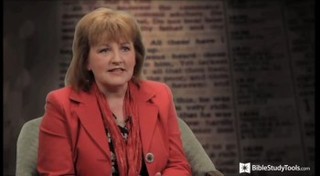- Recent Translations
- All Translations
John 4:19
Share
Settings
John 4:19 Meaning and Commentary
The woman saith unto him, Sir
With another countenance, and a different air and gesture, with another accent and tone of speech, dropping her scoffs and jeers:
I perceive that thou art a prophet;
such an one as Samuel was, who could tell Saul what was in his heart, and that his father's asses were found, and where they were, ( 1 Samuel 9:19 1 Samuel 9:20 ) ; and as Elisha, whose heart went with his servant Gehazi, when Naaman turned to him to meet him, and give him presents; and who could tell, ere the king's messenger came to him, that the son of a murderer had sent to take away his head, ( 2 Kings 5:26 ) ( 6:32 ) . And such a prophet, that had such a spirit of discerning, this woman took Christ to be; and who indeed is greater than a prophet, and is the omniscient God; who knows all men's hearts, thoughts, words and actions, and needs not that any should testify of them to him; for he knows what is in them, and done by them; and can tell them all that ever they did, as he did this woman, ( John 4:29 ) . Now in order either to shift off the discourse from this subject, which touched her to the quick; or else being truly sensible of her sin, and willing to reform, and for the future to worship God in the place and manner he had directed, she addressed Christ in the following words.

